Read Reviews
The Best Pond Paint
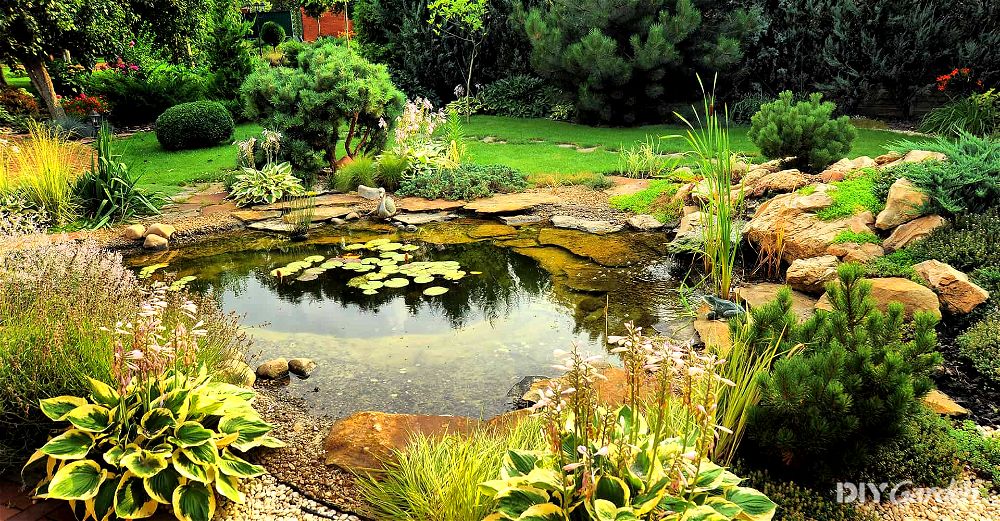
-
TA Paints Chlorinated Rubber Swimming Pool & Pond Paint
-
Fascinating Finishes Waterproof & Pond Paint (Black)
-
Bonda G4 Pond Sealer (Clear)
-
Ask Coatings Ltd. Epoxy Pond Paint (Black)
-
Gold Label Aqua Pond Paint (Black)
Pond Paint Reviews
- Seals leaks in old, tired ponds
- Suitable for use on ponds intended for fish - needs to dry and cure for at least seven days
- Fast drying - first coat is dry within 30 minutes and can be recoated 12 hours later
- Easy to apply using a brush, and can also be sprayed or rolled on
- Range of colours available to suit the rest of your garden
- Very difficult to clean paint from the brush afterwards
Suitable for concrete, fibreglass, brick and stone, this TA Paints Chlorinated Rubber Pond Paint can be used to give ponds a new lease of life.
It comes in a range of colours that will complement an aquatic setting, and is safe to be used in ponds with fish as long as the paint is left to cure for seven days.
Once dry, the paint achieves a gloss finish, and it can be applied using several different methods: using a paintbrush, roller or sprayer. It has a smooth consistency and spreads on easily without leaving brush strokes.
As well as improving the appearance of tired ponds, this paint also has some restorative properties. Due to its waterproof nature, it’s able to fill in small cracks whilst painting. You may find that ponds which previously leaked are better sealed after using this paint. Naturally, this can be very useful as it’s not always possible to locate hairline cracks in ponds.
New ponds will also benefit from an extra layer of sealant.
The paint reaches ‘touch dry’ in approximately 40 minutes; however, at least 12 hours should be left between applying the first and second coat. It then needs to be left for a further seven days, to allow all the solvents to evaporate, before being considered safe for aquatic life.
If you’re after a quality, no-nonsense option, that gives you a choice of different colours, this is one of the best pond paints to go for. Not only can it dramatically improve the appearance of old, worn out ponds, but it helps seal them too.
Did you find this review helpful?
- Easy to apply with either a paintbrush or a roller
- Can be used to seal certain sections of a pond, or to paint the whole thing
- Suitable for aquatic life once properly dried and cured
- Despite the small tin, a little goes a long way - covering approximately 10 – 13 m²
- Showerproof in just 2 hours
- No other colour options available
- Can't be used to paint fibreglass as it won't adhere strongly enough
If you want to refresh a black pond base, this Waterproof & Pond Paint is a sleek, high-quality choice that both seals gaps and boosts appearances.
It comes in a 500 ml tin, which may not sound like a lot but it goes a long way. The paint itself is smooth and relatively thin; it’s easy to apply with either a brush or a roller and requires two to three coats.
Depending on the porosity of the surface, it’s estimated that 500 ml will cover an area of approximately 10 – 13 m
When applied, it becomes showerproof in two hours and, after properly curing and drying, will not be toxic to aquatic life. Therefore, it’s appropriate for ornamental ponds, as well as those with fish in them.
However, if your pond is made from fibreglass, this paint will not be suitable; it won’t adhere strongly enough to the surface.
Nevertheless, fibreglass aside, it’s one of the best pond paints for either touching up parts of a black pond base, or applying a whole new coat. As a sealant it works well to stop leaks, and the satin finish creates a smart overall look for the pond.
It can also be used for several other applications such as gutters, roofs and concrete.
Did you find this review helpful?
- Reliable and efficient as a pond sealer
- Dries transparent so can be painted over any colour (although has a yellow tinge)
- Dries quickly - can apply 4 coats over the course of a single day
- After 72 hours (when it has cured completely) will not be harmful to aquatic life
- Has a very pungent smell and needs to be used in a well-ventilated area
- A lot of safety warnings related to using this product - it needs to be used very carefully
- Hard to clean brushes after use unless you have acetone cleaner
If you’ve noticed leaking and water loss from your pond or water feature, this Bonda G4 Pond Sealer is a good bet for sorting out the problem.
It’s a clear liquid sealant, and therefore not so much of a ‘paint’ as the other options featured on this page. As a result, it can either be used on a small section of pond, or to cover larger areas – no matter the colour.
Just be aware that it can dry with a slightly yellow tinge, which may be most obvious when applied over white surfaces.
One bottle contains a kilogram of product, which should be sufficient for the majority of jobs. If the surface is porous, up to four coats may be required. Other surfaces can generally get away with two.
The liquid itself is thick and can quickly become tacky as it dries, but it’s relatively easy to paint on. You won’t be able to clean the paintbrushes after use unless you have an acetone cleaner, so bear this in mind before starting.
The second coat can be applied quickly, in as little as three hours, and after 72 hours the sealer will be fully cured. Although the product is quite thick, care should be taken to apply it in thin layers.
Once cured, ponds painted with G4 pond sealer will be suitable for aquatic life. However, you should be aware that there are a lot of different safety warnings that come with this product and it should be used with caution. It also has an extremely pungent smell.
However, in terms of effectiveness, it’s one of the best pond paints for sealing cracks. It’s a great option for making both ponds and water features water tight, and can be applied to surfaces of any colour because of its relatively transparent finish.
Did you find this review helpful?
- Dries quickly, achieving a 'hard dry' in approximately 12 hours
- Water-base product is non toxic
- Easy to apply with either a brush or a roller
- Produces a durable, waterproof finish
- Large 2.5 L tin will likely be too much for standard-size ponds leading to wastage if all paint mixed
- Need to work first as mixed paint in tin will start to harden after approximately one hour
- Difficult to get mixing ratios correct without using whole tin
For those who are looking to avoid solvent-based paint, this Epoxy Pond Paint is non-toxic alternative.
Like all epoxy resin, it requires two parts to be mixed together carefully to create a product that will harden. Getting the mixing ratio right is very important, which can be tricky if not intending to use all the product in one go.
It comes in a 2.5 L tin, and 1 L will cover approximately 7 m².
In terms of application, it cures quickly, and a second coat should be applied as soon as the first coat is touch dry – this may take less than one hour depending on weather conditions. The resin can ‘hard dry’ in as little as 12 hours, although the maximum cure time is eight days.
The main benefit of this product is that it is water based and creates a very hard, waterproof seal. It’s also easy to apply with either a paintbrush or a roller.
However, there are downsides to the resin too, and you have to work quicker than you would with other pond paints. On a warm day, all of the mixed resin inside the tin can harden in as little as an hour, so you need to be prepared to work fast.
It’s also an expensive product, especially considering that some of it will likely be wasted in the tin.
Nevertheless, its results are impressive, and it’s one of the best pond paints if you want something water based that will create a strong, waterproof seal.
Did you find this review helpful?
- Can be applied to slightly damp surfaces without having to wait for perfectly dry days
- Non-toxic water-based formula
- Good coverage of 6 - 8 m² per 1 L of paint
- Seals a variety of surfaces such as concrete, brick, fibreglass and plastic
- An expensive option not suitable for those working on a budget
If you think it sounds near-impossible to completely dry your pond before painting it, you might be relieved to hear that the Gold Label Aqua Pond Paint can be applied to damp surfaces.
It’s water-based, non-toxic and self-priming, and one of the best pond paints to use even if the area isn’t perfectly dry.
Before application, two ‘parts’ of paint need to be thoroughly mixed together in order to create a solution that will harden. It can be a little difficult to accurately mix the right amounts, especially if you purchase the large 5 L tin, but you can save the rest of the paint for another time.
This black paint is easy to apply with either a brush or roller and is safe for fish after it has fully cured. It can even be used to fix cracks without fully draining the pond, as long as you’re careful that no water comes into contact with the product until it’s had time to cure completely.
It’s suitable for both ponds and water features, adhering well to the majority of surfaces such as concrete, brick, fibreglass and plastic. There’s no priming required either, saving time by cutting out that job.
When applied to smooth surfaces, 1 L will cover approximately 6 – 8 m². Two coats are required in order properly seal the surface.
Overall, it’s a great product that seals gaps and also greatly improves the appearance of black ponds and water features; however, it is the most expensive paint featured on this list, so isn’t a great choice for anyone working to a budget.
Did you find this review helpful?
How to Choose the Best Pond Paint
Pond paint will make a world of difference to your pond or water feature, regardless of whether they’re brand new or years old.
Different products are suitable for different purposes; some paints will alter the pond’s base colour whilst others are transparent, aimed more towards sealing gaps and cracks.
Choosing the best pond paint will depend on the material of your pond or water feature, as well as its condition and your creative vision! The information below will help you make an informed choice:
READ NEXT: The Best Pond Liners
Coloured Paint and Clear Sealer
If your pond has been around a while, it might be starting to look a bit tired. In this case, a colourful lick of paint can help freshen it up. You can choose a colour that’s the same as your pond bed, or use a different colour to make it easier to see into the pond.
Even if your pond is new, there are several reasons why you might want to use coloured paint. Using a contrasting base colour can help with viewing wildlife in the pond. It can also give the pond a better finish, and improve the waterproofing.
Clear sealer, such as epoxy resin, will help fill any cracks (even those that aren’t visible to the human eye) without adding much (if any) additional colour to the existing pond bed. However, be aware that even ‘clear’ products may have a yellow tinge, and they may get more yellow over time with exposure to sunlight.
READ NEXT: The Best Pond Pumps & Filters
The downside of resin is that it dries extremely hard. Whilst this might sound good, it can be problematic if there is any movement in the base of the pond (for example a crack that decides to crack further). In these instances, the resin will crack too as it has no flexibility. On the other hand, paints that are rubber based and water based offer more flexibility.
Clear sealer like epoxy resin requires two parts to be mixed together before use – this chemical process will cause the liquid to harden after a certain time. Therefore, it’s necessary to work quickly with these products to get them on before the liquid hardens. Be aware that any product you have mixed will become hardened and unusable after a few hours – even if there’s loads left.
READ NEXT: The Best Underwater Pond Lights
Paint Colour
As mentioned, the colour can make a difference to how easily (or not) you can see into your pond. It can also change the appearance of the pond – particularly if it is an ornamental pond or water feature that doesn’t have any wildlife in it.
When it comes to using lighter paint in fish ponds, be aware that it will quickly become dirty. Unlike water features, which can be kept free of algae by using chlorinated water, ponds with fish can’t be treated. Therefore, there will quickly be a build up of algae in the pond. For this reason, a lot of people opt for black as the colour for their pond bed. This doesn’t mean that you can’t use a specific colour in a fish pond, but just be aware that it won’t stay clean for long.
When painting a fish pond, or a wildlife pond, you must make sure that the paint is safe for aquatic life. Many paints are unsafe whilst wet, but suitable once fully cured. Check the description of the paint carefully. It often takes around eight days for pond paint to have reached a ‘chemical cure’ level where it’s safe to introduce fish back into the pond.
READ NEXT: Natural Garden Pond Ideas
Drying speed
Drying speed varies from product to product and the style of product.
As a general rule, epoxy resin paints will dry faster than rubber-based paints, although they may take roughly the same amount of time to cure completely. Some epoxy resin paints can also be applied to damp surfaces, without ruining the finish, which is useful. Sometimes, it can be hard to get the pond or surface perfectly dry before applying the paint. Having a paint that can be applied to slightly damp surfaces offers a little more flexibility.
The manufactures will list a few different ratings for how fast their paint dries in certain scenarios.
Touch dry: this is a term for when the paint is dry enough that contact with its won’t effect it or scrape it off easily. However, you won’t be able to do a second coat or fill your pond when its only touch dry.
Second coat: this refers to the time frame for when you can add your second coat. The faster this time is the easier it is for you to apply all the coats you need to in a short time frame when the weather is good.
Showerproof: this refers to how quickly the paint can cope with a shower or a small amount of water hitting it. If this time is nice and low, say two hours, you can have an easier time fitting your pool painting in even if rain is forecast later.
READ NEXT: How to Clear a Murky Pond
Pond Paint FAQs
There’s a number of reasons to paint your pond, both practical and aesthetic.
The first is to give your pond a new look. Pond paints are available in a range of colours, so you should be able to find a colour to match your garden accessories and furniture if desired.
Painting your pond is a relatively easy way to alter its look and add your own creative touch.
Another reason to paint your pond is to give it a smoother finish. An old pond may have some cracked areas or wear and tear. Giving it a coat of paint will smooth out these areas, tidying up cracks and weathered areas. As the paint is often very durable, it can help prevent further damage.
Some paints are deliberately made to prolong the life of your pond, as well as enhance its look. Painting your pond should help prevent leaks, creating a waterproof seal that’ll help keep water fresh. This will reduce the maintenance required and ensure it looks good for years.
If you’re going to be applying a new coat of paint, you may wish to remove old paint in order to produce a better finish. Paint can be very toxic, so it’s important that you remove and apply it properly.
- Thoroughly clean your pond before starting. Remove dust and debris using a vacuum cleaner around the edge. Scrub the inside with a brush to remove bits stuck to the sides.
- Apply paint remover using a brush. Wearing appropriate safety clothing such as a mask and rubber gloves. Wash the pond using a pressure washer to remove the paint.
- Allow the pond to dry fully and assess the surface. You may need to sand the paint down, and pressure wash again, before applying the new coat of paint.
There are pros and cons to each type of paint. Epoxy dries extremely hard, which is great news for waterproofing. However, this does mean that it can crack easily if there is movement in the structure of the pond. Rubber-based paint is more flexible and less likely to crack, but it is generally considered more toxic and takes longer to dry. Make sure that whichever product you use is suitable for use around aquatic life once it dries.
Start typing and press enter to search

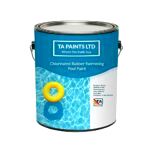
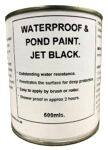
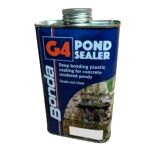
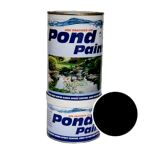
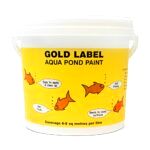
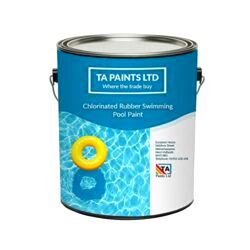
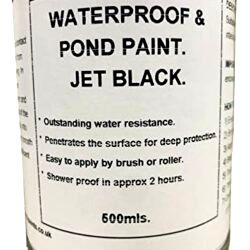
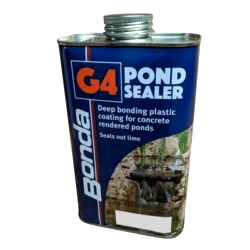
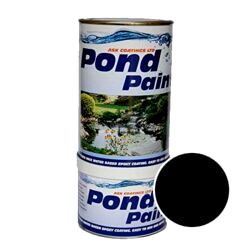
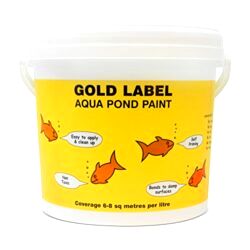
Share